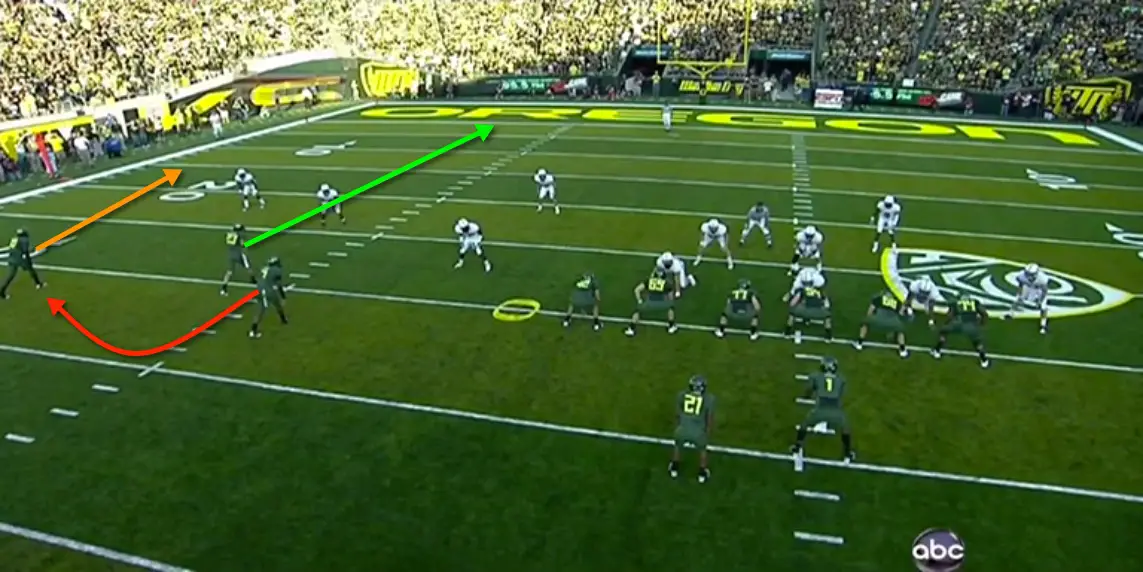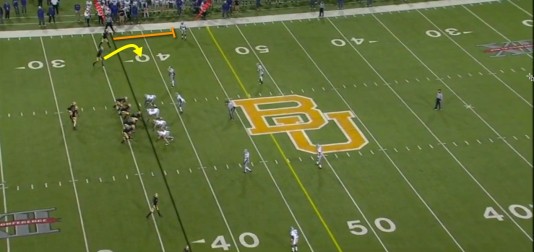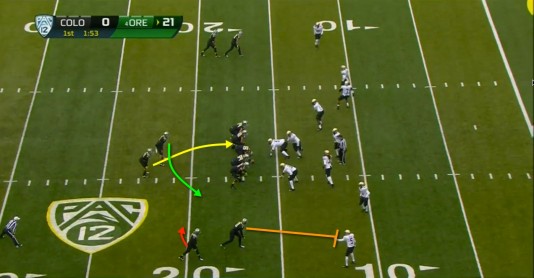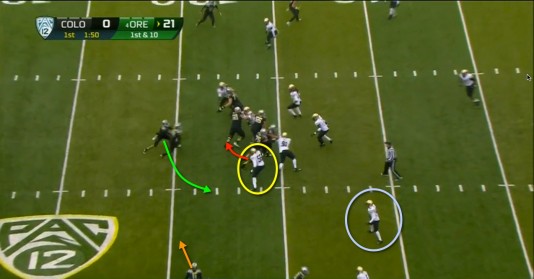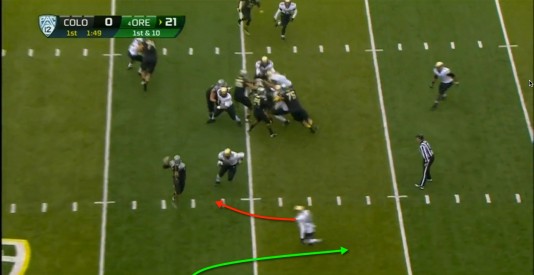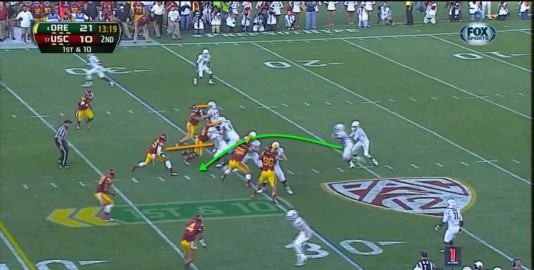It’s only a matter of hours before Oregon and Kansas State will face off in the Fiesta Bowl, and as the rest of the bowl season starts to ramp up to the BCS games, it is a great time of year for college football fans everywhere.
Last week, we discussed Oregon’s numbers advantage, and showed how Baylor earned its leverage over the Wildcats. This week, we’ll discuss some specific concepts that Oregon might use, and try to piece together our own game plan for the Fiesta Bowl.
Luckily, Kansas State faced a Baylor team that’s offense is very similar to Oregon earlier this season, and it just so happens that the team gave Kansas State its only loss of the season. To start, Baylor runs plays at an extremely fast pace (perhaps even faster than the Ducks do in stretches), and uses a great deal of similar tactics that Oregon can replicate.
On the other hand, Baylor does not use its personnel the in the same capacity that Oregon does. Instead of utilizing additional skill players as ball carriers, the Bears are more oriented for a pass-first offense, something that Oregon truly is not. However, the Bears used very commonplace concepts to open up the Kansas State defense.
The first concept that Baylor used repetitively was the exterior wide receiver screen, as shown in the image above. First, notice how Baylor made a point of really spreading Kansas State out, forcing the Wildcat defenders to play in proverbial “no-man’s land” between the receivers, and offensive line. Both defenders are pointing towards runs support to start the game. At the top of the screen, Baylor’s flanker will block the KSU defensive back (orange lines). The slot receiver will run upfield, then hitch back for the pass (yellow arrow)
As soon as the ball is snapped, Baylor throws the ball (dotted green line above) out to the slot receiver as he settles behind his blocker. Regardless of how well KSU’s defenders can tackle, Baylor is nearly guaranteed five yards while the Wildcats remain in soft coverage.
Strictly based on history, KSU will probably not give Oregon’s receivers as much respect in the early going. Fortunately, Oregon has a formation that combats that press coverage which can negate bubble and hitch screens.
By lining up in the close stack formation, defenses can not press the back receivers, and are often put at a major disadvantage in man coverage as well. As you can see in the picture above, Marcus Mariota will be running an inside zone read play with a bubble threat. Mariota will read the defensive lineman in the yellow circle on the first read.
Here we can see the defensive lineman crashing down to tackle the running back. Mariota makes the correct read and pulls the ball to start his path down the backside of the defense. We can also see Mariota’s second read come into view in the blue circle. The defender in the blue circle has two choices: he can attack Mariota and leave the receiver at the bottom of the screen unguarded, or he can dare Mariota to run the ball.
In the image above, the defender chooses to attack Mariota, and leaves the receiver off-screen unguarded, giving the receiver an easy path into the end zone.
As soon as Oregon can effectively space out the Kansas State defense, I would expect Barner and Thomas to start slashing up the middle as they did throughout the regular season.
After gashing the Trojans with hitch screens from the double stack formation, Barner went to work again. In the image above we can see the wary Trojan defenders giving a lot of attention to the stacked receivers. The defender indicated by the red arrow at the bottom of the image will actually retreat to pass coverage to avoid getting burned by another pass. Oregon will run an inside zone read play with a hitch threat.
When Barner breaks through the first line of defenders, his blocks are set up perfectly. Each orange line above indicates an Oregon blocker lined up with a Trojan defender.
While I don’t expect the KSU defense to allow over 400 yards on the ground, better defenses have fallen to Oregon’s deadly interior spread action. Any comparisons of KSU’s defense to Stanford’s are far from credible, as Stanford’s defense is truly an elite group that played the game of their lives in Autzen Stadium.
With a good performance from Oregon’s wide receivers to start the game, the Ducks’ interior running game is just as good if not better than Baylor’s, which had no problems racking up yards against the Wildcats. If the Ducks can keep the Wildcat defense from adding attention to the run with quick screens and simple passing routes, Oregon should be able to operate with great efficiency in between the tackles with more inside zone plays than outside zone or sweep read plays.
Related Articles:
Josh is a College Football enthusiast from sunny Southern California. He has written for several self-operated prep sports blogs, as well as multiple SB Nation sites. In High School, Josh played football for four years, and helped create and operate the team’s no-huddle system. Most of Josh’s football knowledge branches from watching College Football his entire life, and is backed up by his first hand experience in both option and spread offenses. Above all, though, he is a proud student at the University of Oregon.
@joshschlichter

